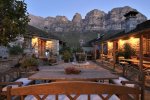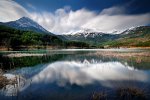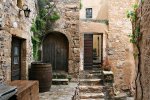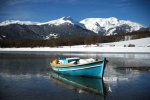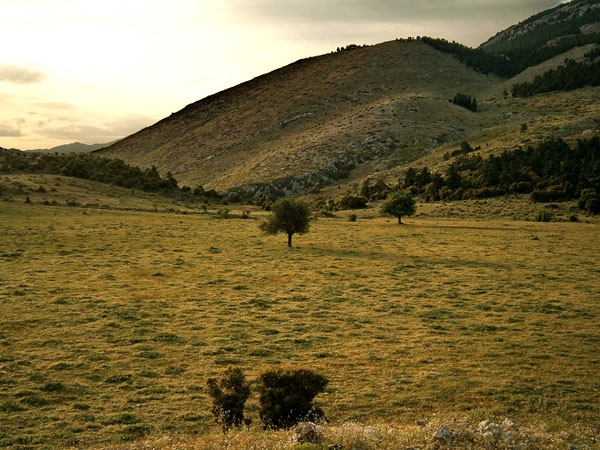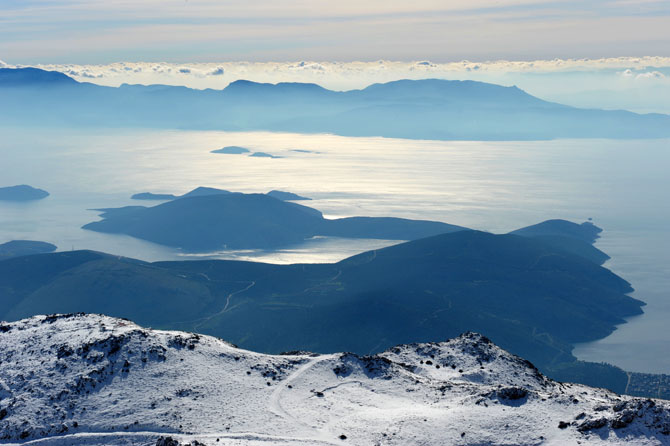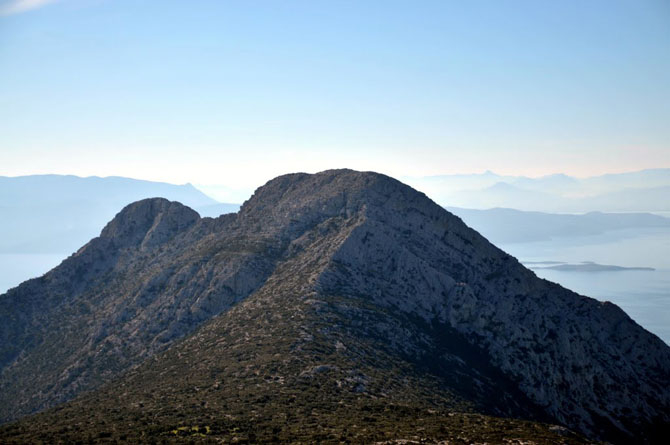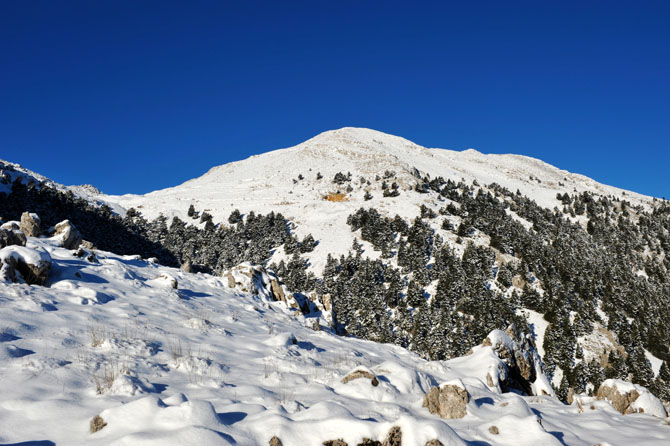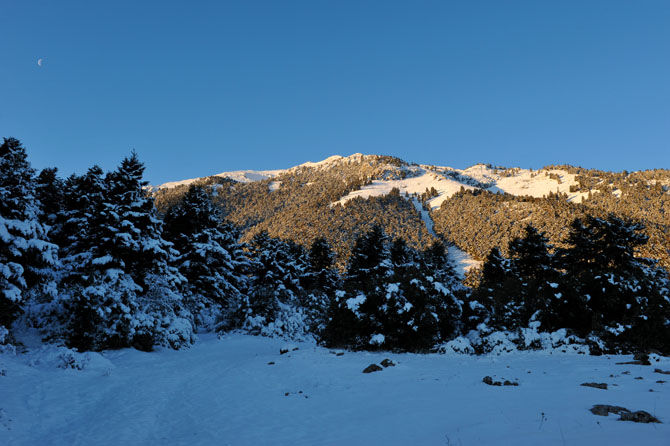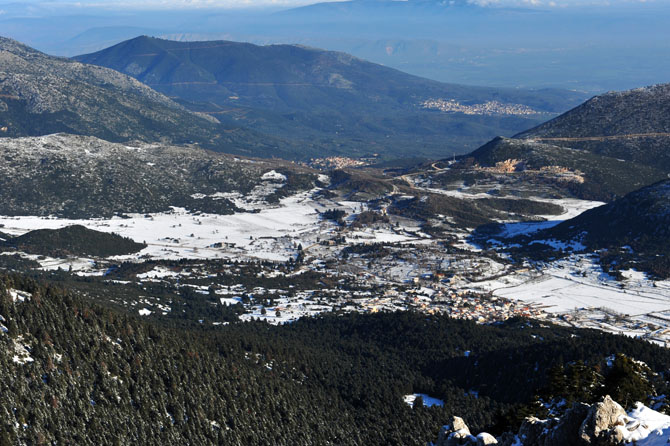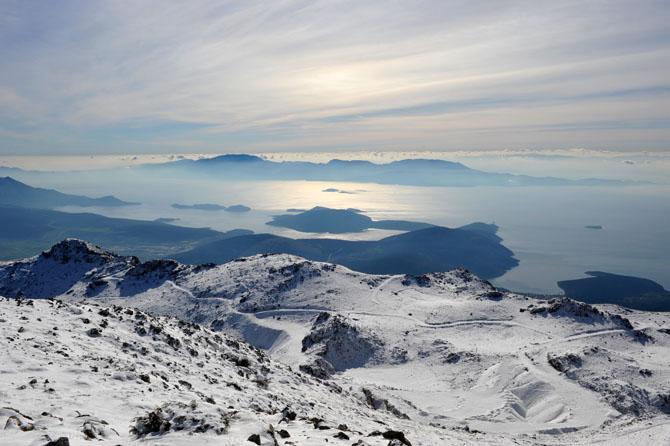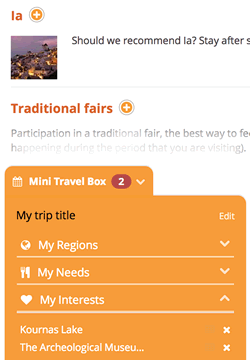Mount Elikonas rises between Thebes and Livadia. It is 35 kilometers long and 15-20 kilometers wide. The mountain volume is divided into three smaller parts, the Helicon altar of Zeus, the source of Ippokrini and the famous grove of the Muses with the highest peak of Zagora (1,527 meters). Paliovouna is the highest peak of central Elikonas (1,749 meters). Sierra Koliades or Loutsa Monastiriou is located on western Elikonas, with a highest peak of about 1,400 meters. The famous monastery of Osios Loukas is also located at its foot. Elikonas was famous since the ancient years, as the place of the nine Muses as well as for the healing properties of its herbs.
According to the myth, Elikonas was the brother of Kitheronas. Those two brothers had very different characters. Elikonas was quiet and respectful, while his brother Kitheronas was greedy and malicious. Kitheronas one day killed his father and pushed his brother Elikonas off a cliff. The Gods immediately reacted to the unholy act of Kitheronas and turned him and his brother into a mountain. But they sent Erinyes, some terrible deities punishing the evil, to Kitheronas and the beautiful Muses to Elikonas.
The Muses were daughters of Zeus and Mnimosini, born in Pieria and lived in Elikonas. Apollo’s other name, “Musagetis” (“leader of the Muses” in Greek), is explained by the fact that he was their teacher. Their main occupation was singing and dancing, accompanied by the sounds of phorminx, flut and lyre. This is how the Art of Music was created, taming and ennobling the soul of people.
Initially all nine Muses were believed to be goddesses of Remembrance, Music, Religion and Art. After some time, each one of them got one specific property and protected a particular art. So, Kleio protected history, Efterpi protected the art of the flute, Thaleia protected the bucolic poetry and comedy, Melpomeni protected tragedy, Erato protected the wedding, Polymnia protected mimic, Ourania protected astronomy and Kaliope the epic poems and rhetoric.
The grove of the Muses was located above the current village Paliopanagia, near the monastery of Agios Nikolaos, where poets used to go to get inspired. Before you get there, you will meet the “Spring of Aganipi” on the left side of the road. According to the myth, Aganipi was the daughter of Termisos, the river flowing on Mount Elikonas. The water of the spring inspired everyone who would drink from it to write lyrics. Isiodos did so and thus became the first poet of Greece. There was a statue of Euphemia, who was said to be the nanny who raised the Muses, and into a cave there was a statue of Linos, who was a poet and singer. According to a version of the myth, Linos was the son of Muse Ourania and Amfigaros and grandchild of Poseidon. He was one of the oldest musicians and had taught Hercules the art of Music in Thebes. However, one day Linos boasted that he was a better musician than god Apollo and the later punished him for his audacity.
In the grove of the Muses were found the statues of the Muses, works of famous artists like Kifisodotos, Strogilionas and Olimpiosthenis. There were also the statues of Apollo and Hermes fighting for the lyre, as well as the statue of the blind singer Thamiris and the guitar player Arion. There was also a temple dedicated to the Muses, which was named “Museo”, hosting games and big feasts called “Musea”. Below there were many statues and the oldest one belonged to Isiodos and symbolized his victory in a music race in Chalkida. There was also the statue of Tilefos, son of Hercules and Avgi.
Leaving the park, you will see the source of “Ippokrini” down the road, which is nowadays called “Kryo Pigadi” (“cold well” in Greek). This spring is said to have been shaped by the hooves of Pegasus who had been tamed by the Bellerophon. Unfortunately, nothing of all these is maintained in the grove. Only some ruins of the walls on the steep hill Pirgaki were found there, as well as relics of the “Museo” and the temple of Apollo in the chapel of the Holy Trinity. The excavation works in the area were carried out in 1888 by the French archeologists Paulo Samot and A. de Rinder.
Use the map or the alphabet below to find your favorite destination!
Achaea Prefecture
Aegina
Aetoloakarnania Prefecture
Agathonisi
Agistri
Alonissos
Amorgos
Anafi
Andros
Antiparos
Arcadia Prefecture
Argolida Prefecture
Arta Prefecture
Astypalea
Attiki Prefecture
Kalymnos
Karditsa Prefecture
Karpathos
Kasos
Kastelorizo
Kastoria Prefecture
Kavala Prefecture
Kea (Tzia)
Kefalonia
Kerkyra (Corfu)
Kilkis Prefecture
Kimolos
Korinthia Prefecture
Kos
Koufonisi (Ano & Kato)
Kozani Prefecture
Kythira - Antikythira
Kythnos
Samos
Samothrace
Santorini
Schinoussa
Serifos
Serres Prefecture
Sifnos
Sikinos
Skiathos
Skopelos
Skyros
Spetses
Symi
Syros
Would you like to combine skiing in the morning and then go swimming in the afternoon, all in one region? Click to choose your interests and see in which part of Greece you enjoy them. Combinations are endless!
